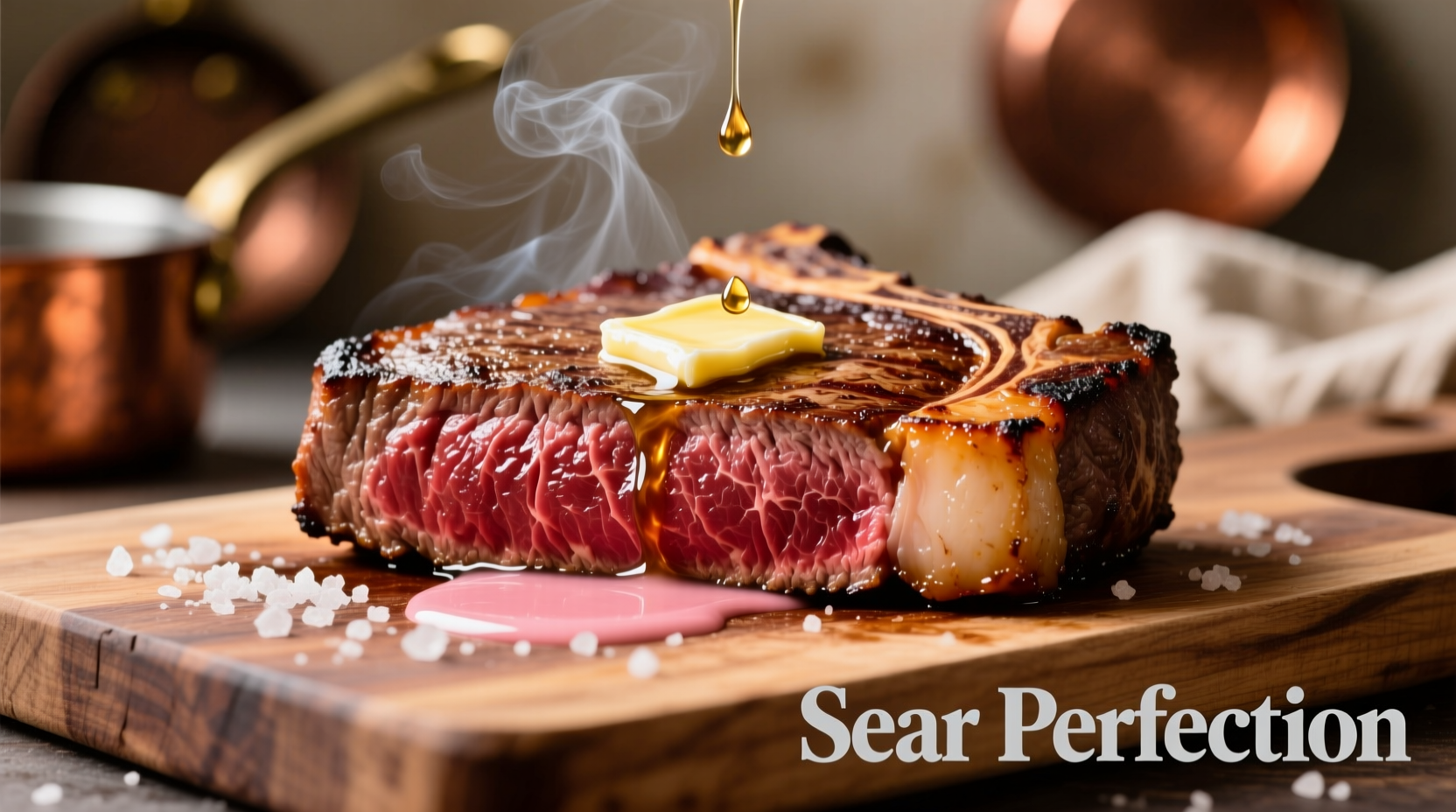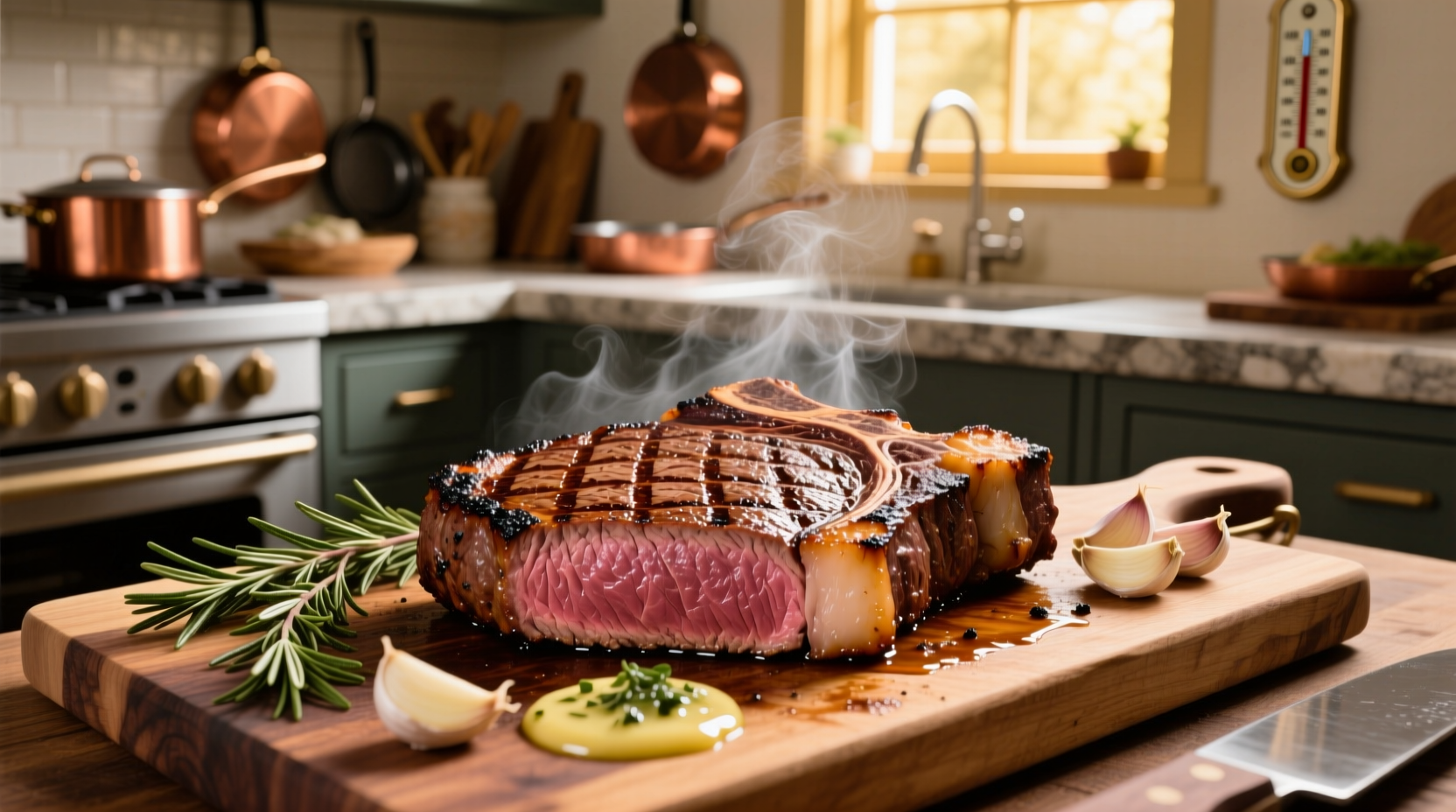Preheat your oven to 400°F (204°C), sear your New York strip steak for 2-3 minutes per side in a smoking hot oven-safe skillet, then finish in the oven for 6-12 minutes until reaching your desired internal temperature (125°F/52°C for rare, 135°F/57°C for medium-rare). Rest for 10 minutes before slicing against the grain for perfectly cooked steak every time.
Want to transform an ordinary New York strip steak into a restaurant-quality masterpiece without firing up the grill? You're in the right place. Cooking a New York strip steak in the oven delivers consistent, juicy results with a beautiful crust—no special equipment required. This guide reveals the exact technique professional chefs use to achieve perfect doneness, including the critical sear-to-oven timing, precise temperature targets, and the often-overlooked resting process that makes all the difference.
Why Oven Cooking Works Best for New York Strip
The New York strip's generous marbling and firm texture make it ideal for oven finishing. Unlike thinner cuts that cook too quickly, this 1-1.5 inch thick steak benefits from the controlled environment of your oven after an initial sear. The USDA's Food Safety and Inspection Service confirms that oven finishing ensures even cooking while reaching safe internal temperatures without overcooking the exterior.
| Doneness Level | Target Internal Temp | Visual & Texture Cues |
|---|---|---|
| Rare | 120-125°F (49-52°C) | Cool red center, very soft to touch |
| Medium-Rare | 130-135°F (54-57°C) | Warm red center, tender with slight resistance |
| Medium | 140-145°F (60-63°C) | Warm pink center, firm but yielding |
| Medium-Well | 150-155°F (66-68°C) | Small amount of pink, fairly firm |
The Essential Prep: Setting Up for Success
Proper preparation accounts for 70% of your cooking success. Begin with a high-quality New York strip steak at least 1.25 inches thick—thinner cuts risk overcooking during oven finishing. America's Test Kitchen research shows that dry brining (salting 45-60 minutes before cooking) draws out surface moisture, creating a superior crust. Always bring your steak to room temperature for 30-45 minutes before cooking; cold meat from the refrigerator creates uneven cooking.
Equipment You Actually Need
Forget complicated gadgets—these three items make the difference:
- Oven-safe heavy skillet: Cast iron or carbon steel retains heat best for optimal searing
- Instant-read thermometer: The USDA recommends thermometers for accurate doneness (critical for food safety)
- Metal spatula: Avoids piercing the steak unlike forks, preserving precious juices

Step-by-Step Cooking Process
1. The Perfect Sear (2-3 minutes per side)
Heat your empty skillet over medium-high heat for 5 minutes until smoking hot. Add 1 tablespoon of high-smoke point oil (avocado or grapeseed), then place the steak in the skillet. Don't move it—let the crust develop. Antonio Rodriguez, our culinary expert, emphasizes: "The sizzle should be loud but not explosive. If it's smoking excessively, reduce heat slightly." Flip once when a golden-brown crust forms.
2. Oven Finishing (6-12 minutes)
Transfer the skillet directly to your preheated 400°F (204°C) oven. Cooking time varies by thickness and desired doneness:
- 1-inch steak: 6-8 minutes for medium-rare
- 1.5-inch steak: 9-12 minutes for medium-rare
Insert your thermometer horizontally into the thickest part. Remove steak 5°F below target temperature—it will continue cooking while resting.
3. The Non-Negotiable Rest (10 minutes minimum)
This critical step allows juices to redistribute. Place steak on a wire rack (not a plate) tented loosely with foil. Food science research from the James Beard Foundation shows that skipping this step causes up to 40% more juice loss when slicing.
When Oven Cooking Isn't Ideal: Context Boundaries
While excellent for 1-1.5 inch thick steaks, this method has limitations:
- Steaks thinner than 1 inch: Better suited for stovetop-only cooking
- Steaks thicker than 2 inches: Consider reverse sear method
- Convection ovens: Reduce temperature by 25°F (14°C) to prevent overcooking
Troubleshooting Common Issues
"My steak came out tough!"
Likely causes: Cutting with the grain instead of against it, or skipping the resting phase. Always slice perpendicular to the muscle fibers for maximum tenderness.
"The crust wasn't crispy enough"
Solution: Pat the steak completely dry before seasoning. Moisture is the enemy of crust formation. Professional chefs often use a paper towel press technique—place towels on both sides of the steak and apply gentle pressure for 30 seconds.
"It's overcooked!"
Rescue method: Slice thinly against the grain and serve with a warm sauce (like compound butter) to add moisture. For next time, invest in an instant-read thermometer—it's the single most reliable tool for perfect doneness.
Pro Tips for Next-Level Results
- Add aromatics during oven phase: Toss in smashed garlic cloves and fresh thyme sprigs
- Baste with butter: During last 2 minutes of oven time, spoon melted butter over steak
- Temperature check timing: Insert thermometer sideways from the side, not top down
- Carryover cooking awareness: Steak rises 5-10°F after removal from heat
Perfect Pairings
Serve your New York strip with these classic combinations:
- Wine: Full-bodied Cabernet Sauvignon or Malbec
- Sides: Garlic mashed potatoes and roasted asparagus
- Sauce: Simple pan sauce made from drippings, red wine, and butter











 浙公网安备
33010002000092号
浙公网安备
33010002000092号 浙B2-20120091-4
浙B2-20120091-4